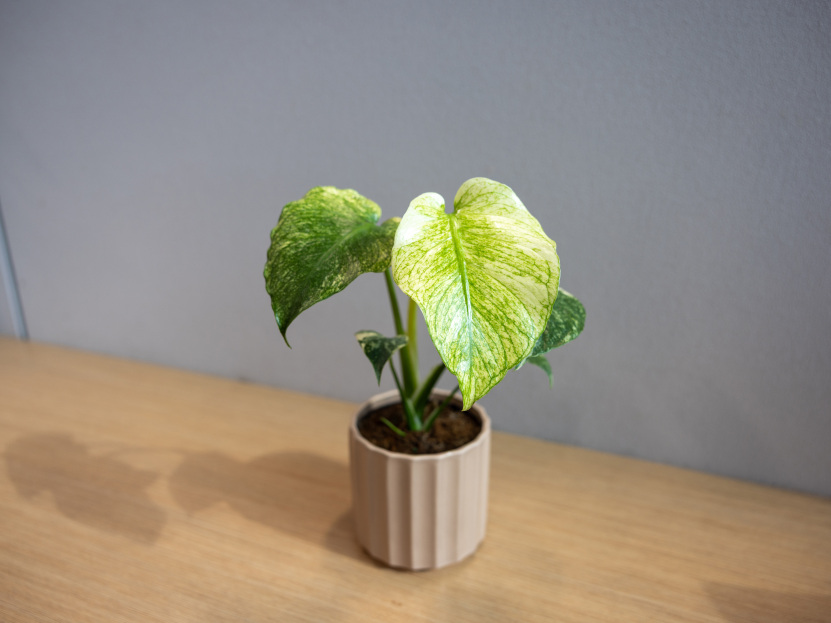
A rare twist on a classic climbing giant
Monstera ‘Mint’, also known as Monstera deliciosa 'Mint Variegata', is a stunning variegated variety of the classic Monstera. It features marbled mint-green, silvery white, and creamy streaks across deep green foliage, making it a true collector's gem. With the right conditions, this climbing plant grows into a bold, architectural statement in any space.
Monstera ‘Mint’ thrives in bright, indirect light, which helps preserve and enhance its beautiful variegation. The best location for this plant is near a bright east- or south-facing window where it receives filtered light throughout the day. While it needs plenty of light, direct sunlight should be avoided, as it can burn the variegated sections of the leaves. If your space doesn’t provide enough natural light, you can supplement with a grow light to help maintain strong marbled patterns and healthy growth.
Water your Monstera ‘Mint’ when the top 2–3 inches of soil feel dry to the touch. This plant prefers consistent moisture, but it’s essential to avoid soggy soil. During the growing season in spring and summer, you may need to water every 7 to 10 days. In fall and winter, reduce watering to every 10 to 14 days. Always use a pot with drainage holes, and be sure to empty the saucer after watering. Brown edges on the leaves may indicate underwatering or low humidity, while yellowing leaves could be a sign of overwatering.
As a tropical species, Monstera ‘Mint’ thrives in high humidity, ideally around 60% or more. If your indoor air is dry, especially in winter, you can increase humidity by using a humidifier, grouping it with other plants, or misting the foliage lightly (though not directly into the leaf fenestrations). This plant prefers temperatures between 65–85°F (18–29°C) and should be kept away from drafts, heaters, and air conditioners. Never expose it to temperatures below 55°F (13°C), as this can cause stress or damage to the plant.
Use a well-draining, chunky aroid mix that supports airflow around the roots. A great blend includes high-quality potting soil, orchid bark, perlite or pumice, and a bit of charcoal or coco coir. Repot your Monstera ‘Mint’ every one to two years, or when you notice it becoming root-bound. Choose a pot slightly larger than the current one to help prevent overwatering.
Feed your plant monthly during the active growing season (spring through early fall) using a balanced liquid fertilizer diluted to half strength. Since variegated plants have less chlorophyll, they’re more sensitive to excess nutrients, so avoid over-fertilizing. Pause fertilization during the winter months when the plant’s growth naturally slows.
Monstera ‘Mint’ is a natural climber, and it benefits from vertical support such as a moss pole, wooden plank, or trellis. Providing a structure or trellis encourages the plant to produce larger leaves with more pronounced fenestrations as it matures. If the plant becomes unruly or leggy, prune it gently using clean shears, cutting just above a node to stimulate new growth.
You can propagate Monstera ‘Mint’ through stem cuttings. Choose a healthy section of stem that includes at least one node and a variegated leaf. Allow the cutting to callous over for a few hours, then place it in water, moist sphagnum moss, or perlite. Once roots are about 1–2 inches long, transplant the cutting into a soil mix. Propagation is most successful in the spring or early summer. Remember to select cuttings with strong variegation, as this trait is genetic and will be passed on to the new plant.
Like all Monsteras, Monstera ‘Mint’ is toxic to pets and humans if ingested, due to its presence of calcium oxalate crystals. It’s best to keep it out of reach of cats, dogs, and small children.